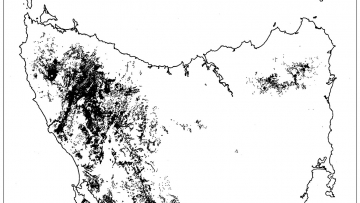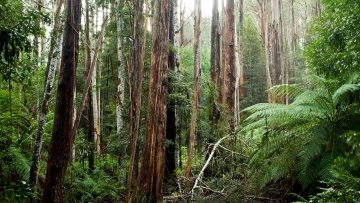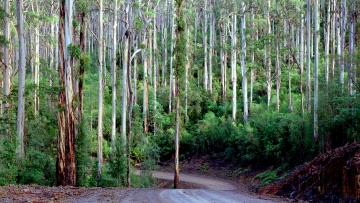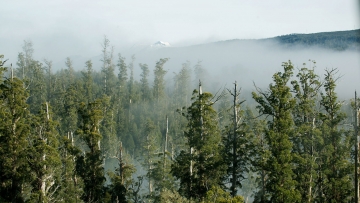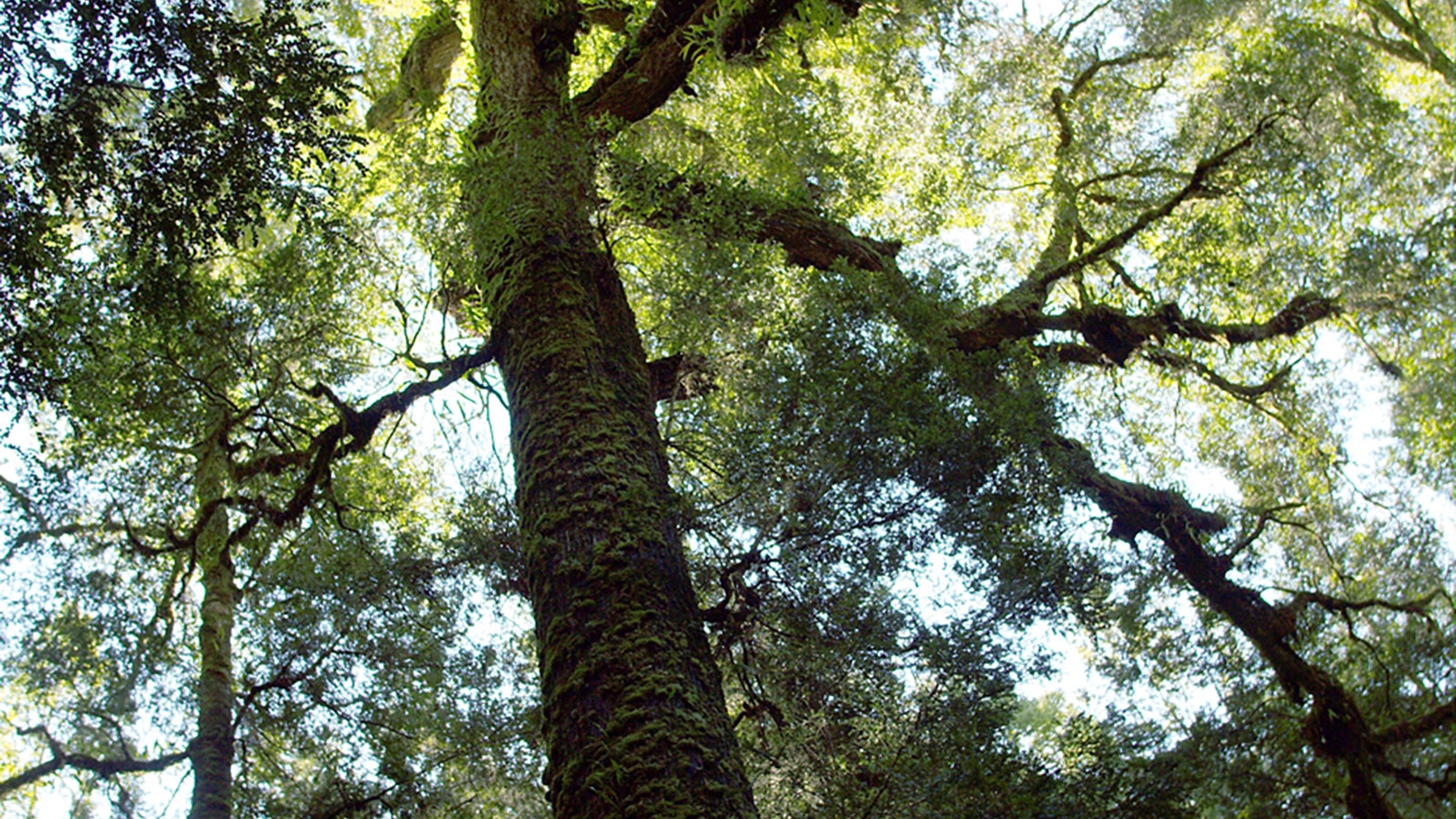
Rainforest
The temperate rainforests of eastern and southeastern Australia can be divided into warm and cool temperate forests. Cool temperate rainforest is restricted mainly to Tasmania and Victoria, with small patches in New South Wales.
Cool temperate rainforest in Tasmania has been defined as forest communities with trees greater than 8 metres in height dominated by one or more of the following species: myrtle (Nothofagus cunninghamii), sassafras (Atherosperma moschatum), leatherwood (Eucryphia lucida), celery-top pine (Phyllocladus aspleniifolius), king billy pine (Athrotaxis selaginoides), pencil pine (Athrotaxis cupressoides), huon pine (Lagarostrobos franklinii) or chestnut pine (Diselma archeri).
Tasmanian cool temperate rainforest is comprised of two alliances, the myrtle beech alliance and the pencil pine alliance (known locally as montane rainforest). The myrtle beech alliance includes most of the rainforest in Tasmania and occurs from the lowlands to the highlands. It can be divided into three groups termed callidendrous, thamnic and implicate rainforest, on the basis of floristics and structure. The pencil pine alliance is a small group confined to high altitudes, mainly in central Tasmania.
Eucalypts are not considered rainforest species as they generally require fire to regenerate. For forest management purposes a stand of rainforest species and eucalypts is considered rainforest if the eucalypt crowns cover less than 5% of the stand.
Rainforest occurs from sea level to over 1000 m elevation in western Tasmania with some tracts in the northeastern highlands and smaller patches elsewhere. It is most extensive in the north-west where it occurs adjacent to and interspersed with mixed forest. Patches become more fragmented on the west coast and in the south-west where scrub and buttongrass moorlands increase.
Rainfall is the main environmental factor that determines the distribution of rainforest. Annual rainfall must exceed 1000 mm per year and summer rainfall 25 mm per month. As a result of higher fire frequency, rainforest is largely displaced from the 1000 - 1500 mm rainfall zone and achieves its best development in areas receiving over 1500 mm rainfall per year. Soil fertility and altitude largely determine the type of rainforest found in any particular place.
Rainforests constitute about 10% (662,600 ha)* of the State’s forested area (3.3 million ha)
* Based on TASVEG 3.0 (Citation: Department of Primary Industries, Parks, Water and Environment. TASVEG 3.0, Released November 2013. Tasmanian Vegetation Monitoring and Mapping Program, Resource Management and Conservation Division)
